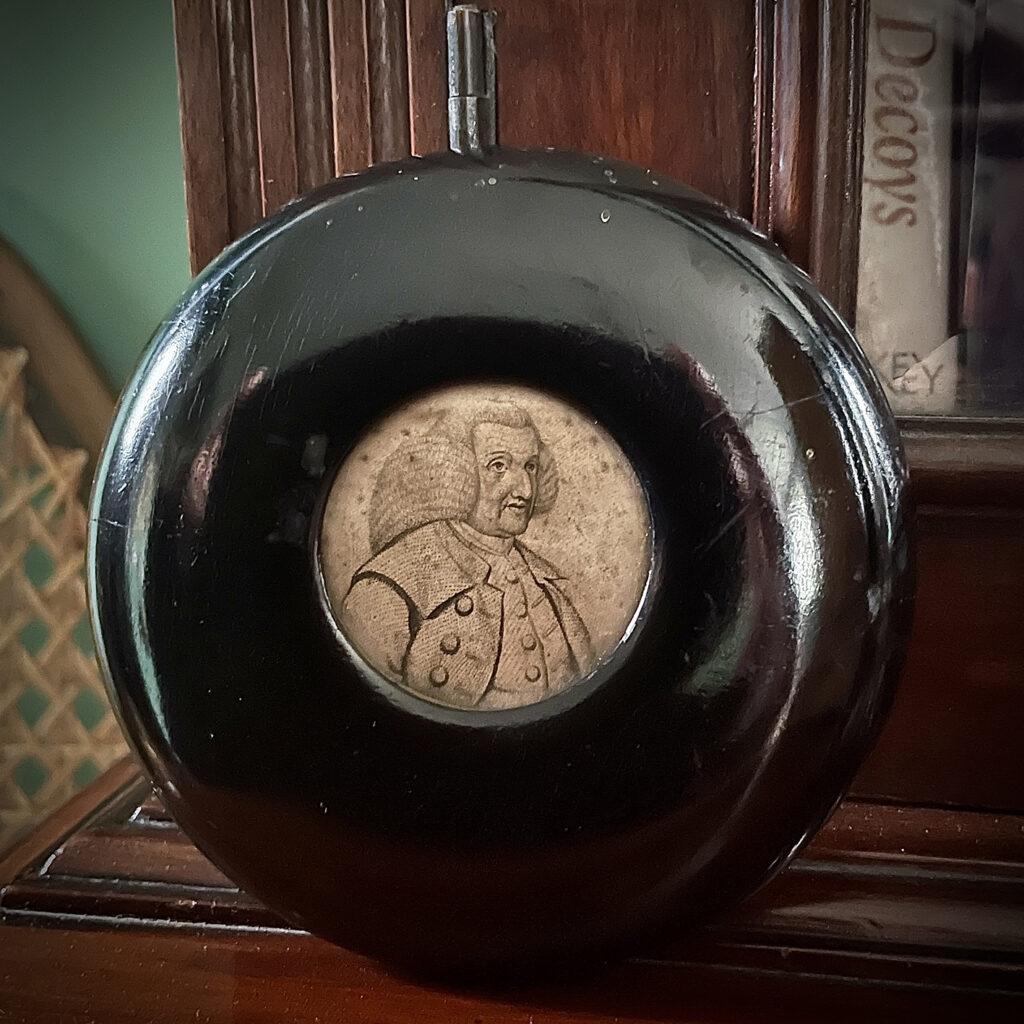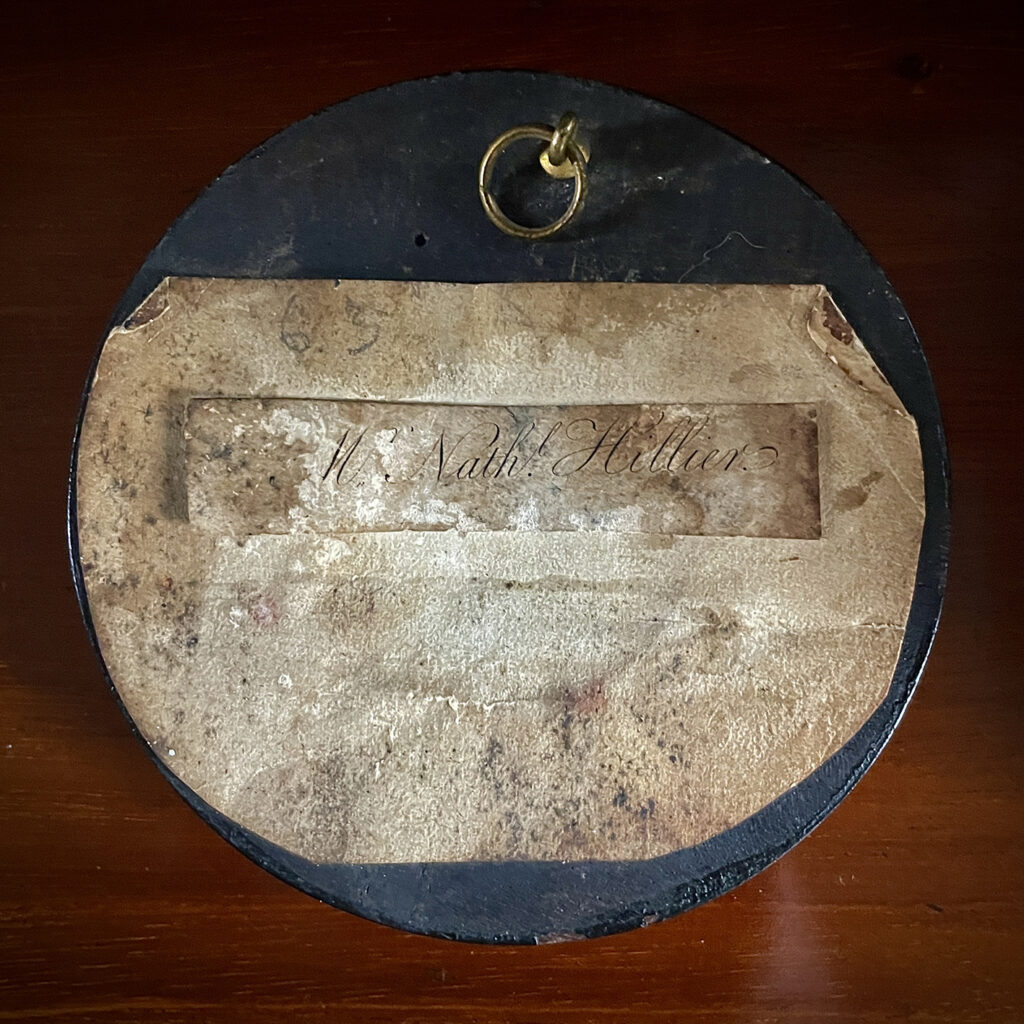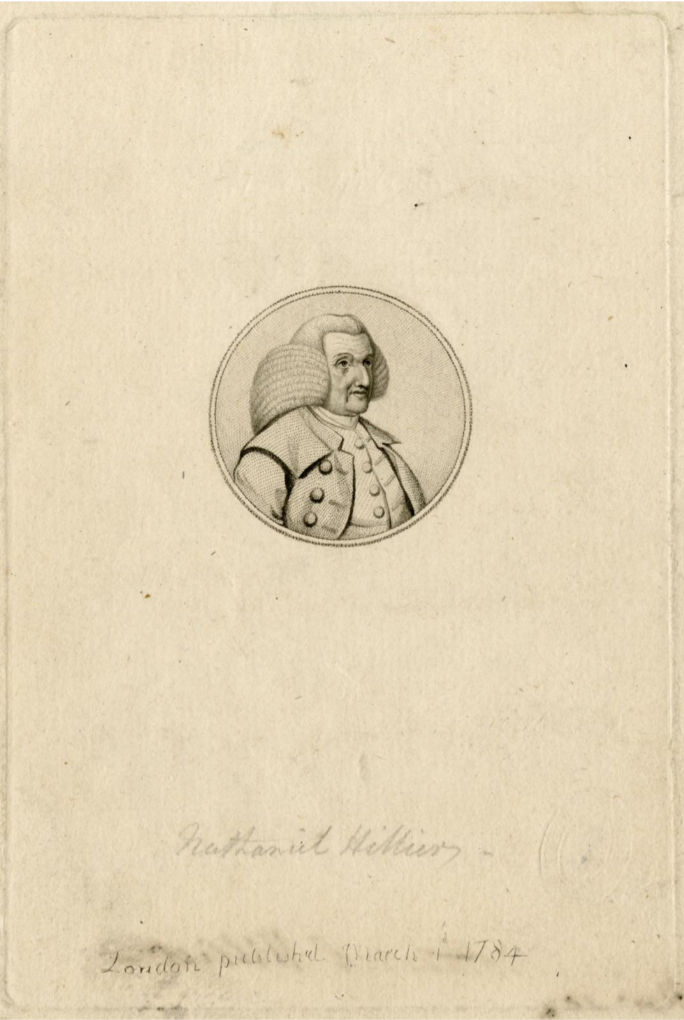
I’ve collected prints, from etchings to engravings and woodcuts to lithographs, since I was a schoolboy. I always look at them when I’m out buying, not that I need any more, but – you know, just in case. Browsing the excellent Risby Barns antiques centres near Bury, I chanced upon this charming, chunkily framed portrait etching. The etching is tiny, being only 3.5cm in diameter. I rather liked this grand looking Georgian peering out at me from across the centuries.
The back was covered with aged and glue-stained pasted paper, with a roughly cut label reading ‘Mr Nathaniel Hillier‘. Who was he? A bit of judicious searching online revealed that Nathaniel Hillier (1707-83) was a Georgian collector of, and dealer in, prints and drawings. According to a record in the British Museum, his catalogue stated that all his prints and drawings were “mounted on double or triple cartoons, ruled with lines, washt to the tint of the drawing, and gilt with the finest gold.” Impressive!

However, a book called ‘Book For A Rainy Day Or Recollections of the Events of the Years 1766-1833‘ written by John Thomas Smith in 1905 states that his prints “…were well selected as to impression, but much deteriorated in value by Mr. Hillier’s attachment to strong coffee, with which he had stained them. It has been acknowledged by one of the family that, what with the expense of staining, mounting, and ruling, his collection only brought them one-fifth of the cost of the prints in the first instance.” Not so impressive! But, staining works on paper with coffee wasn’t an uncommon practise at the time.
Smith continued “Mr. Hillier, I believe, was of the same family as the late Nathaniel Hillier of Stoke, near Guildford, one of whose daughters married Colonel Onslow. He was a most extensive collector of engravings, and his cabinets contained numerous rarities, but he spoiled all his prints by staining them with coffee, to produce, as he thought, a mellow tint, but by which process he not only deprived most of them of their pristine brilliancy, but rendered their sale considerably less productive.” A good family, but not such a good dealer! After his death in 1783, Hillier’s stock and collection were sold by Christie’s, but I can’t find any reports on how they did.

Smith also goes on to state that “The earliest engraved portraits of Dr. Johnson exhibit a wig with five rows of curls, commonly called “a story wig.” Among the old dandies of this description of wig we may class …. So was that worn by Mr. Nathaniel Hillier, an extensive print-collector, as is represented in an engraved portrait of that gentleman.” So my engraving is known. And he was considered a dandy! I also found that an example was sold as part of lot 465 from the collection of the Late Mark Mastermind Sykes, at S. Sotheby on 24th June 1824.
So on to the etching itself. The British Museum holds the only other copy I can find and the image of it online shows that the portrait roundel was above the name on a sheet of paper measuring roughly 15cm by 10cm. So my example had been cut down before being framed. It was engraved and printed in 1784 by Thomas Trotter (1756-1803), a painter and printmaker who attended the Royal Academy Schools from 1779. He studied under the visionary artist William Blake and became notable in his day for his engravings of paintings by Sir Joshua Reynolds. He also left behind 71 portraits that we know about.
It may be ‘cut down’ (a big no-no in the print world) and mottled and stained by over two centuries of time, but my etching is almost certainly extremely rare. I can’t believe that, given the subject matter and his reputation, many were printed – let alone kept. I love how it is framed, almost in an ‘in memoriam’ manner. I also love this little peek into the ‘expertise’ (or foolhardiness, perhaps?) and business of a Georgian print dealer. I shall now hang him on a wall opposite part of my print collection, so that he can see them. I wonder what he would have thought?

